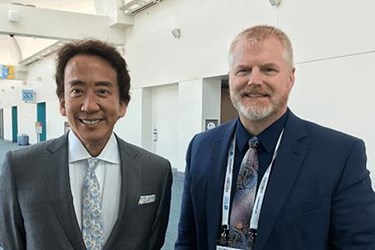Does The Biopharmaceutical Industry Need To Broaden Its Horizons?

By Rob Wright, Chief Editor, Life Science Leader
Follow Me On Twitter @RfwrightLSL

When I had the opportunity to interview Axovant Sciences CEO David Hung during the 2017 annual meeting at BIO in San Diego for the October issue of Life Science Leader magazine, one of the questions posed was sparked by our discussion of his experience at Pro-Duct Health and his invention of a microcatheter for early detection of ductal breast cancer in women. As he explained his medical device invention, Hung commented, “I don’t want to be just medicines, or just devices, or anything like that.” So I asked him, “Do you have a belief that maybe biopharma in general needs to broaden its horizons?” Hung responded, “If you look at medicine for the last 1,000 years, it has primarily been about the interface of biology and chemistry. Most drugs today are still organic small molecules, and most of these interact with protein targets, much like the way a key fits a lock. But if you look at traditional biology and chemistry interfaces, there are only so many ways a key can fit into a lock. You can change the size, you can change the shape, or you can change the charge (i.e., electronic keys), but that’s pretty much it.”
Dr. Hung believes that for the future of medicine, therapeutic developers are going to have to think of ways to incorporate other elements that can shape what therapeutically constitutes a target, as well as the approach to that target. “For the next 1,000 years, we are going to increasingly see the interface of biology, chemistry, and physics,” he attests. “If you look at electricity, magnetism, light, and heat, all of these things have physical properties that can overwhelm the limitations of just a chemical molecule.” In addition, Hung believes we also will see the increasing digitization of data. “We are going to see circuitry that’s been reserved for high-tech applications now moved into the medicines sphere,” he adds. “We’re going to see a lot more comprehensive approaches to medicine.” He doesn’t believe biopharma, medical device, or other healthcare-related companies should confine themselves to just doing what has always been done. “To me, that’s like looking for your car keys where the light is,” he laughs. Hung admits that because of fiduciary obligation to shareholders who may not have a 1,000-year time horizon, Axovant is currently focusing on relatively traditional approaches to medicine (e.g., Intepirdine [RVT-101]). “But if that program is successful,” he grins, “we will become a much bigger company with a very robust revenue stream, allowing us to focus on far more futuristic and aggressive therapeutic approaches strategies than those of traditional medicinal chemistry.”
If you enjoyed this most recent installment of our Beyond The Printed Page (free section of the magazine), you’ll probably really like the full length features involving many more interesting biopharmaceutical industry executives. Don’t miss out — subscribe today and you can save $246!
Insert link to feature article here
